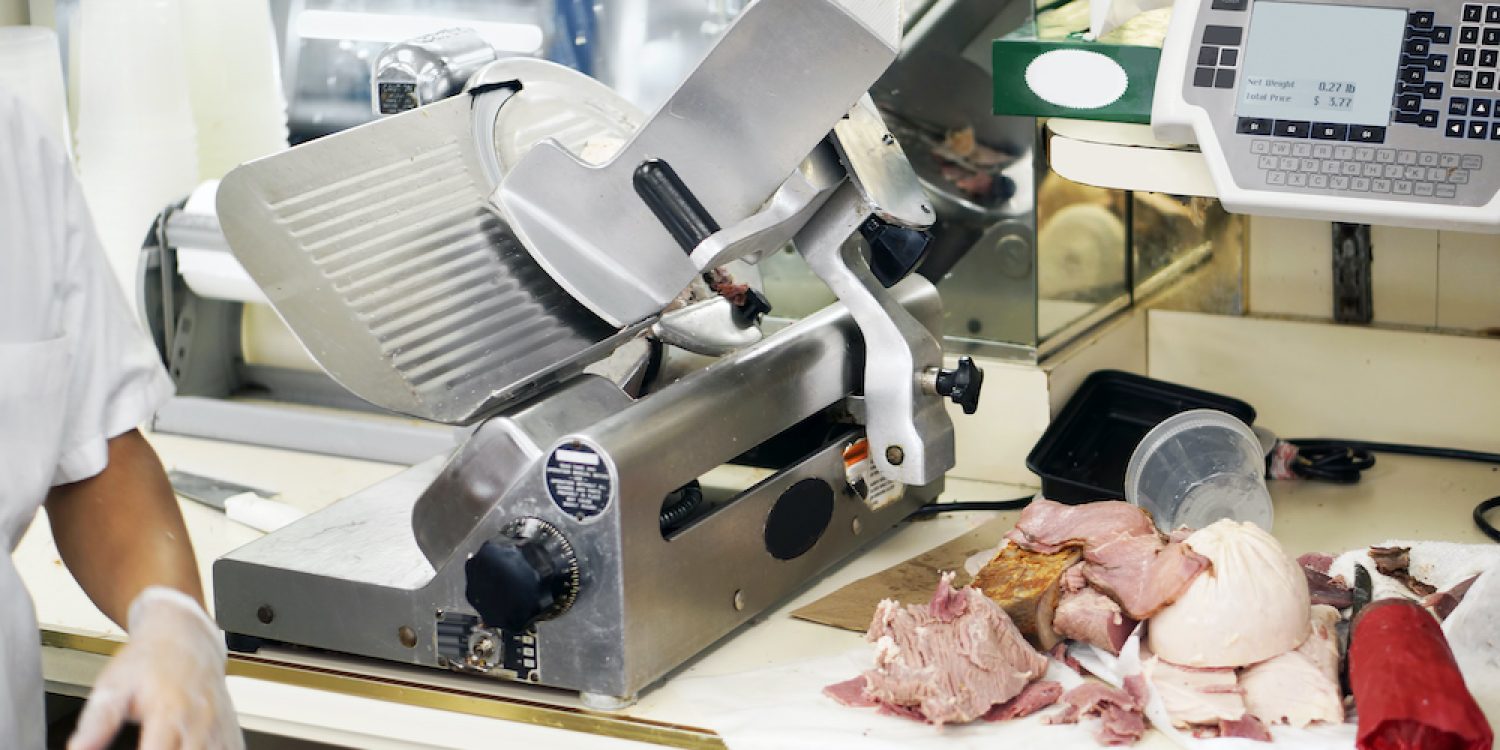What are Commercial Meat Slicers?
Commercial meat slicers are machines that are designed to slice meat efficiently and effectively into thin and uniform slices. They’re generally divided into three categories: light-duty, medium-duty, and heavy-duty slicers. Each type of slicer is designed to meet specific needs and requirements, and they come with different features and capabilities.
Light-duty slicers are designed for low-volume slicing, and they are suitable for small delis or cafes. They are easy to operate and maintain, and they are usually compact in size so they more easily fit into the space of a smaller kitchen.
Medium-duty slicers are designed for moderate-volume slicing, and they are suitable for medium-sized delis or butcher shops. They are more powerful than light-duty slicers, and they can handle thicker cuts of meat.
Heavy-duty slicers are designed for high-volume slicing, and they are suitable for large-scale commercial kitchens or butcher shops. They are the most powerful type of slicers, and they can handle heavy-duty slicing tasks.
What to Look for in a Commercial Meat Slicer
When choosing a commercial meat slicer, there are several factors to consider. Here are some key things to look for:
Be familiar with the parts of a commercial meat slicer. A commercial meat slicer consists of several parts, including the blade, the carriage, the thickness adjustment, and the food carriage. Make sure you understand how each part works and how to operate it. The parts include the following:
- Blade – This is the most critical part of the slicer since it’s responsible for cutting the meat. Blades come in various sizes, typically ranging from 9-14 inches. The larger the blade, the more meat you can slice at once. The type of blade you choose also depends on the type of meat you will be slicing. For example, serrated blades work well with tougher meats, while smooth blades work better with delicate meats.
- Carriage – The carriage is where the meat sits and slides back and forth during the slicing process. Look for a carriage that is large enough to accommodate the meat you need to slice.
- Thickness Adjustment – This is the part that determines the thickness of the meat slices. Make sure the thickness adjustment is easy to use and allows you to adjust the thickness of the slices precisely.
- Food Carriage – The food carriage holds the meat in place during the slicing process. Look for a food carriage that is sturdy and easy to clean.
If you’re looking for a machine that can save you time and offer consistent slicing thickness, an automatic slicer might be the way to go. While they can be more expensive, they’re easier to use and require less effort on your part. On the other hand, if you’re on a budget and looking for more precise control over your slicing, a manual slicer might be a better fit.
When it comes to blades, stainless steel is the way to go. Not only are they durable and corrosion-resistant, but they’re also easy to clean and maintain. Plus, they’ll retain their sharpness longer than other types of blades, ensuring that you get consistent and precise slices every time.
Removable features are another important consideration. Look for a slicer with removable components such as the blade, food carriage, and thickness adjustment. This makes cleaning and maintenance a breeze and ensures that you can easily replace parts if needed.
The size of the blade is also a crucial factor to keep in mind. While larger blades can slice more meat at once, they can also be more expensive. Consider the volume of meat you plan on slicing and choose a blade size accordingly.
Finally, safety should always be a top priority. Look for slicers with safety features such as a blade guard, non-slip feet, and automatic shut-off. These features can help prevent accidents and ensure that your slicer is safe to use for both you and your staff.
Proper Maintenance of a Commercial Meat Slicer
Maintenance is a crucial aspect of owning a commercial meat slicer. Proper maintenance ensures that the slicer performs optimally, lasts longer, and reduces the risk of food contamination. Here are some important maintenance tips to consider:
How Often it Should be Serviced
The frequency of servicing your commercial meat slicer depends on how often you use it. For heavy use, it’s recommended to service the slicer at least every three months, while for moderate use, once every six months is sufficient. Light use may only require annual servicing as long as you’re doing proper maintenance and cleaning on your own.
Cleaning and Sanitizing
Cleaning and sanitizing your commercial meat slicer after each use is essential to prevent the buildup of bacteria and food particles. Use warm, soapy water to clean the slicer thoroughly, paying close attention to the blade and food carriage. Rinse the slicer with clean water and sanitize with a food-safe sanitizing solution.
Lubrication
Proper lubrication ensures that the slicer runs smoothly and reduces the risk of parts wearing out prematurely. Lubricate the slicer according to the manufacturer’s instructions, using a food-grade lubricant.
Regular Inspection and Servicing
Regularly inspect your commercial meat slicer for signs of wear and tear, such as cracks, chips, or rust. If you notice any issues, replace the parts immediately to prevent further damage. Regular servicing can also help to detect any issues that aren’t visible to the naked eye.
Partnering with professional food equipment maintenance services will take care of all of this for you. Professional slicer maintenance is an excellent way to keep your slicer running optimally by sending in your old blade for a new one. This ensures you always have a sharp blade, reducing the risk of injury and improving the quality of your meat slices.
A commercial meat slicer is an essential tool for any restaurant or deli looking to slice meat quickly and efficiently. Consider what’s most important for your needs, maintain the slicer and work with a slicer exchange to get the most ease and benefits of use for the life of your slicer.

